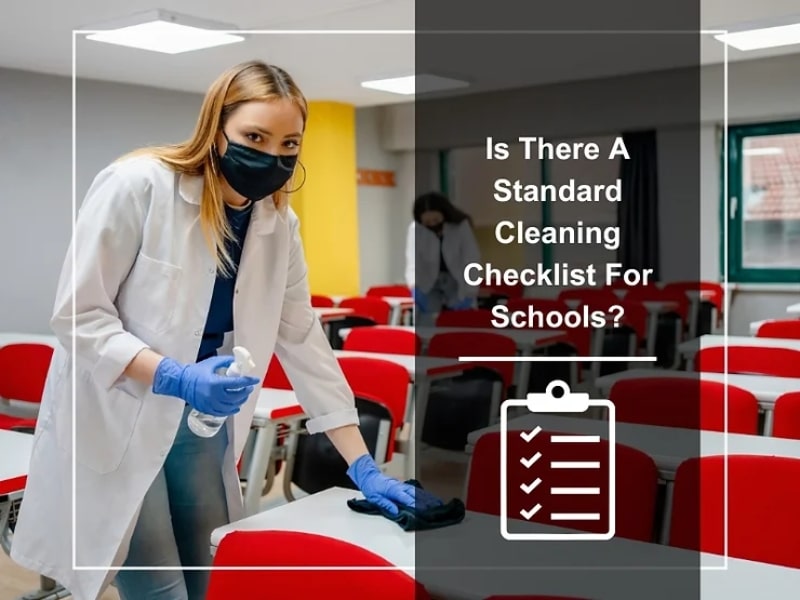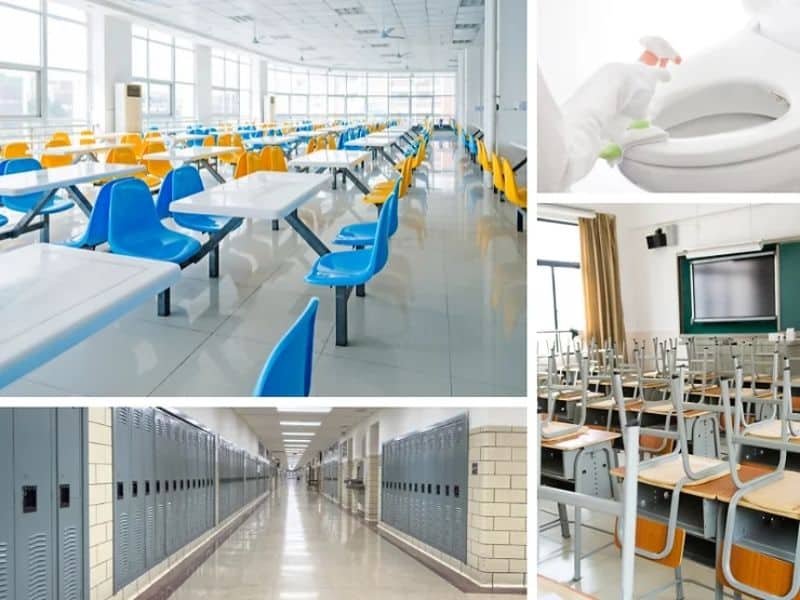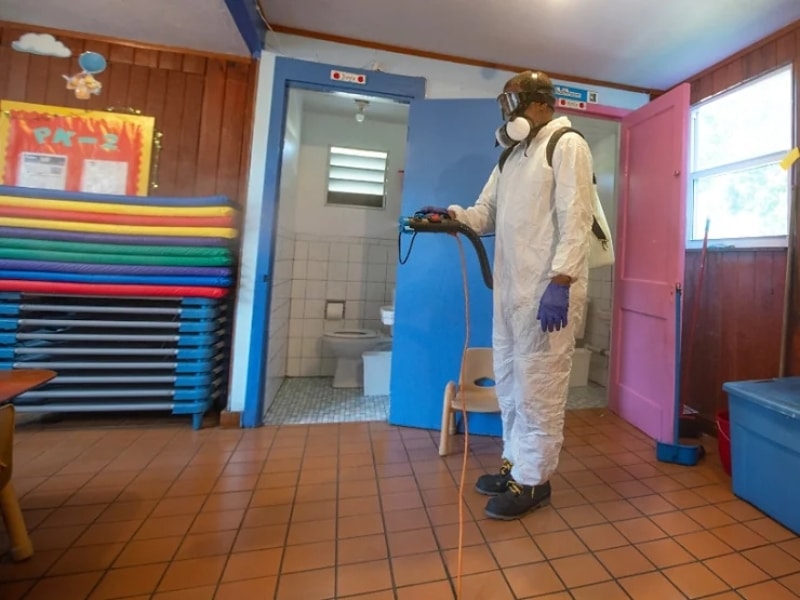Is There A Standard Cleaning Checklist For Schools?

Maintaining a clean and safe school environment is essential for students and staff. A standard cleaning checklist ensures that every area receives the attention it needs. This article will explore the importance of a cleaning checklist for schools, what it should include, and how professional cleaning services can make a significant difference.
Why is a cleaning checklist essential for educational institutions?
A cleaning checklist serves as a roadmap for school maintenance. It ensures consistency, accountability, and thoroughness in cleaning tasks. Here are a few reasons why it is essential:
- Health and safety: A clean environment reduces the spread of germs and illnesses, promoting the well-being of students and staff.
- Organised maintenance: A checklist helps custodians stay organised and ensures every area is noticed.
- Enhanced learning environment: A tidy school promotes a positive atmosphere, allowing students to focus better on their studies.
- Accountability: Clear guidelines help custodial staff understand their responsibilities, making holding them accountable for their work easier.
- Compliance: Many educational institutions must meet health and safety regulations. A checklist helps ensure compliance with these standards.
How often should you follow the standard cleaning checklist in schools?
The frequency of cleaning varies depending on the area and activity level. Here are some recommendations:
- Daily cleaning: High-traffic areas, restrooms, and cafeterias should be cleaned daily to maintain hygiene.
- Weekly cleaning: Classrooms, libraries, and administrative offices should receive thorough cleaning at least once weekly.
- Monthly deep cleaning: Areas such as gymnasiums, auditoriums, and outdoor spaces require deep cleaning monthly to address accumulated dirt and grime.
- Seasonal cleaning: Seasonal tasks, like window and carpet cleaning, should be scheduled throughout the year.
- Post-event cleaning: Immediate cleaning is essential to restore the space after events like sports games or school fairs.
What should be included in a school cleaning checklist?
A comprehensive cleaning checklist should cover various areas and tasks. Here’s what to include:

- Classrooms: Dust surfaces, wipe down desks and chairs, and vacuum or mop floors.
- Restrooms: Clean and disinfect toilets, sinks, and mirrors; restock supplies; and empty trash bins.
- Cafeterias: Clean tables, chairs, and food prep areas; mop floors; and dispose of waste.
- Hallways: Sweep and mop floors, dust ledges, and clean windows and doors.
- Outdoor areas: Remove litter, clean playground equipment, and maintain landscaping.
What areas in schools require regular cleaning?
Different areas of a school require various levels of attention. Here are some crucial areas:
- High-traffic zones: Hallways and entrances receive heavy foot traffic and should be cleaned frequently.
- Restrooms: These areas need regular disinfection to prevent the spread of germs.
- Classrooms: Regular cleaning helps create a conducive learning environment.
- Cafeterias: Food preparation and eating areas require meticulous cleaning to ensure food safety.
- Offices: Administrative areas should remain clean to provide a professional atmosphere.
Why is disinfection crucial in educational institutions?
Disinfection is vital in schools to combat illness and maintain a healthy environment. Here’s why:
- Germ reduction: Regular disinfection kills harmful bacteria and viruses, reducing illness spread.
- Safety for vulnerable populations: A disinfected environment benefits students with allergies or weakened immune systems.
- Compliance with health standards: Many schools must adhere to health regulations that require regular disinfection.
- Parent and community confidence: A visible commitment to cleanliness boosts trust among parents and the community.
- Improved attendance: Fewer illnesses lead to better student attendance and academic performance.
How can you ensure green cleaning practices in schools?
Implementing green cleaning practices can enhance the school environment. Here’s how:
- Use eco-friendly products: Opt for non-toxic, safe cleaning supplies for students and staff.
- Train staff on green practices: Educate custodial staff about sustainable cleaning methods and products.
- Promote recycling: Encourage recycling programs throughout the school to reduce waste.
- Minimise water use: Use water-efficient cleaning methods and tools to conserve resources.
- Air quality management: Ensure proper ventilation to maintain indoor air quality and reduce the presence of harmful chemicals.
How can schools ensure compliance with cleaning standards?
Schools must maintain rigorous cleaning standards to ensure a safe environment. Here are steps to ensure compliance:
- Develop a cleaning policy: Create a clear policy outlining responsibilities and expectations.
- Regular training: Provide ongoing training for custodial staff on cleaning standards and best practices.
- Conduct inspections: Schedule regular inspections to assess compliance with cleaning protocols.
- Document cleaning procedures: Maintain records of cleaning schedules and methods for accountability.
- Solicit feedback: Encourage input from staff and students about cleanliness to identify areas for improvement.
What are the benefits of professional cleaning for schools?
Hiring professional school cleaning services offers numerous advantages:
- Expertise: Trained professionals bring experience and knowledge about effective cleaning methods.
- Consistency: Regular professional cleaning ensures that standards are consistently met.
- Time savings: Outsourcing cleaning allows school staff to focus on their primary responsibilities.
- High-quality results: Professional services utilise advanced equipment and techniques for thorough cleaning.
- Customised solutions: Cleaning companies can tailor their services to meet the specific needs of each school.

How can you maintain cleanliness between professional cleanings?
Implementing effective preventive maintenance strategies for school facilities is crucial for ensuring a safe, comfortable, and efficient learning environment. Here’s how:
- Establish daily routines: Encourage staff and students to tidy their spaces regularly.
- Implement a “Clean as You Go” policy: Promote a culture of cleanliness where everyone is responsible for keeping areas tidy.
- Provide cleaning supplies: Make cleaning materials accessible for quick clean-ups.
- Schedule regular maintenance: Plan regular maintenance tasks, such as carpet cleaning and floor care, to uphold cleanliness.
- Involve students: Engage students in cleanliness initiatives, fostering a sense of responsibility for their environment.
Ensuring a clean and safe learning environment
A standard cleaning checklist is vital for maintaining a clean and safe educational environment. By implementing regular cleaning schedules, focusing on disinfection, and adopting green practices, schools can promote a healthier atmosphere for students and staff alike.
Suppose you’re looking for professional cleaning services tailored to the unique needs of educational institutions. In that case, JBM Janitorial is here to help. With expertise in commercial cleaning, we provide reliable and thorough cleaning solutions to keep your school pristine and welcoming. Let us help you create a clean learning environment for your students. Contact JBM Janitorial for school cleaning solutions!
